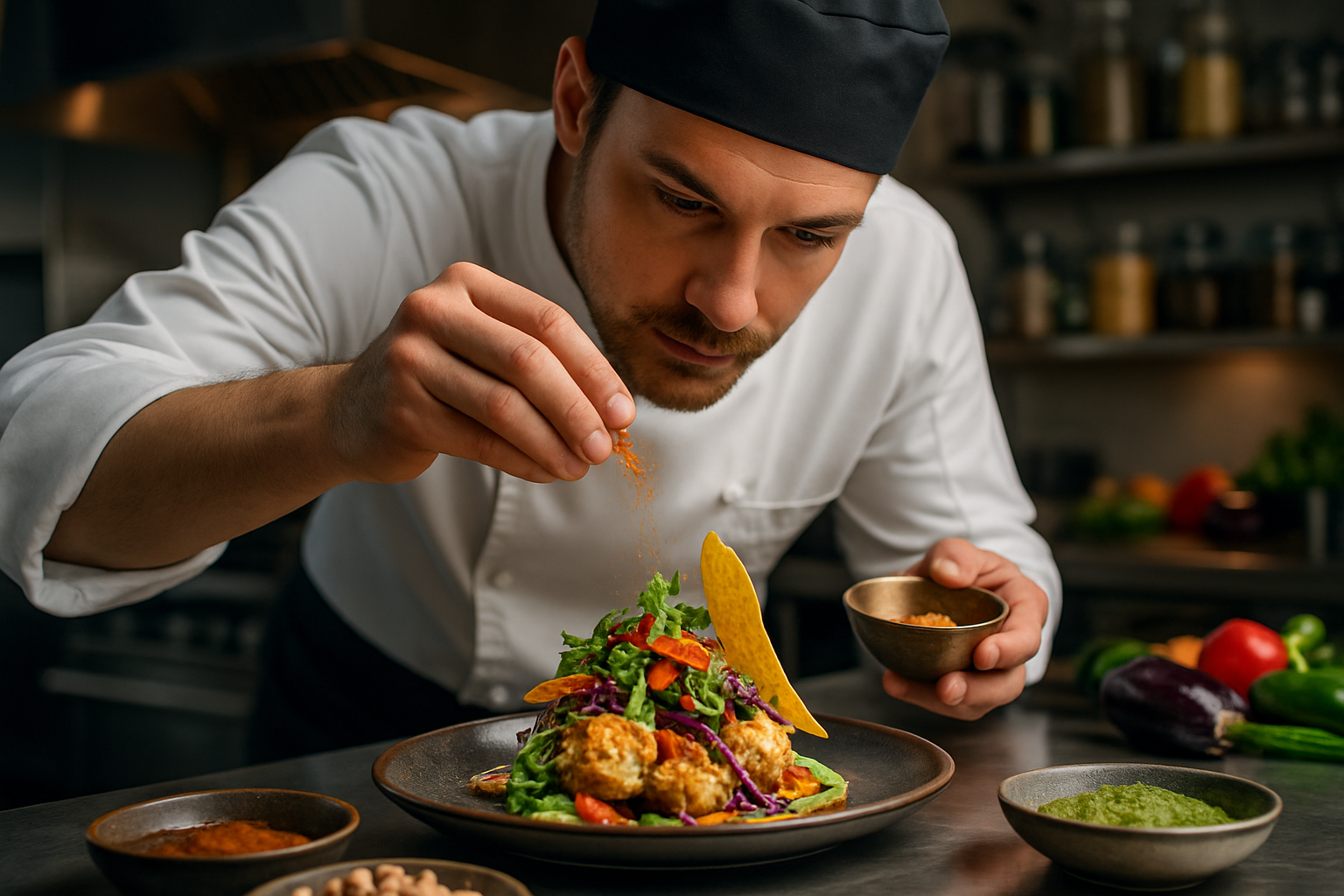Culinary Fusion: The Art of Blending Flavors Across Cultures
Embark on a gastronomic journey that transcends borders and challenges traditional culinary boundaries. Culinary fusion, the innovative blending of diverse cooking styles and ingredients, is revolutionizing the way we experience food. This article delves into the exciting world of fusion cuisine, exploring its origins, techniques, and the creative chefs pushing the envelope of flavor combinations.

Breaking Culinary Boundaries
At its core, fusion cuisine is about breaking rules and challenging preconceptions. Chefs experimenting with fusion often find themselves crossing cultural lines, combining ingredients and cooking methods that traditionalists might consider taboo. This culinary rebellion has led to some of the most innovative and exciting dishes in modern gastronomy. From sushi burritos to kimchi tacos, fusion cuisine pushes the boundaries of what’s possible in the kitchen, creating new flavor profiles that tantalize the taste buds and challenge our culinary expectations.
Techniques in Fusion Cooking
Successful fusion cuisine requires more than just throwing together random ingredients from different cultures. It demands a deep understanding of flavor profiles, cooking techniques, and cultural contexts. Chefs skilled in fusion cooking often employ techniques like balancing contrasting flavors, texture play, and reimagining traditional dishes with unexpected ingredients. For example, a fusion chef might take a classic Italian risotto and infuse it with Thai lemongrass and coconut milk, creating a dish that honors both culinary traditions while offering something entirely new.
Global Ingredients, Local Twist
One of the most exciting aspects of fusion cuisine is its ability to introduce diners to new ingredients and flavors. Chefs often source exotic ingredients from around the world, combining them with local produce to create dishes that are both familiar and adventurous. This approach not only results in unique flavor combinations but also promotes sustainability by encouraging the use of locally sourced ingredients. For instance, a chef in California might combine locally grown avocados with Japanese wasabi and Mexican chili peppers to create a globally inspired yet locally rooted dish.
The Future of Fusion
As our world becomes increasingly interconnected, fusion cuisine continues to evolve. Modern chefs are pushing the boundaries even further, incorporating elements of molecular gastronomy, foraging, and ancient cooking techniques into their fusion creations. The future of fusion cuisine looks bright, with emerging trends like Afro-Asian fusion, Nordic-Latin combinations, and even fusion desserts that blend savory and sweet flavors in unexpected ways. As diners become more adventurous and globally aware, the possibilities for culinary fusion are truly limitless.
Fusion Cuisine Tips & Facts
• Balance is key: When combining flavors from different cuisines, ensure no single element overpowers the others.
• Respect cultural origins: While experimenting, be mindful of the cultural significance of ingredients and dishes.
• Start with familiar pairings: Begin your fusion journey by combining flavors from cuisines that share common ingredients.
• Texture matters: Consider how different textures can enhance your fusion dish.
• Fusion isn’t just about taste: Incorporate visual elements from different cultures for a truly immersive experience.
• Some famous fusion dishes: Tex-Mex cuisine, California rolls, and Korean tacos.
• Fusion cuisine can be a gateway to exploring and appreciating diverse culinary traditions.
Culinary fusion represents more than just a trend in the food world; it’s a reflection of our increasingly globalized society. By blending flavors, techniques, and ingredients from diverse cultures, fusion cuisine offers a unique opportunity to explore the world through our taste buds. As we continue to break down culinary boundaries, we not only create exciting new dishes but also foster cultural understanding and appreciation. The art of culinary fusion invites us all to be more adventurous, open-minded, and creative in our approach to food, promising a future filled with endless delicious possibilities.





